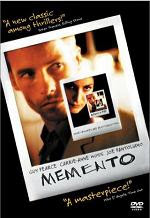
Film Research:
Film title: Memento
Director: Christopher Nolan
Year: 2000
The film is set in California, and is character based. The genre for this film is established by the thrilling music. There is also suspense created as the focus is on the picture. There is also the sudden shout and gunshot of a man. The film then turns black and white with a voice over to make the audience recognise the flashback. The main character is introduced as the focus is on him holding the picture and then it develops onwards as the audience hears his voiceover. Narrative is introduced as the death of the man tells the audience the film leads on to him. The voiceover is also the main character speaking in a monologue about his condition. The clues given from the opening sequence is the picture, does he take pictures of everything? Another clue is the death of the man, why has he killed this man? These clues also raise questions for the audience.
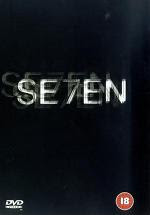
Film Title: Se7en
Director: David Fincher
Year: 1995
This film is also set in California, and is character based, we can see this by the fact the camera focuses on “detective Somerset” right from the beginning as he is getting dressed. The genre of the film- detective thriller- is established by the obvious mise-en-scene as there is a person lying dead in a pool of blood. The characters are also costumed in detective clothing. The narrative is introduced as the newer detective, played by Brad Pitt, enters, and they start walking off together, and Somerset questions him. This shows that the narrative may be based on the relationship between the two detectives, or the reasons for Pitt’s intention to work specifically with Somerset. The questions raised by this opening sequence include: why is Somerset so sombre, lonely? Is Pitt’s character hiding something?
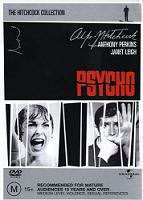
Film Title: Psycho
Director: Alfred Hitchcock
Year: 1960
The opening sequence of Psycho introduces the audience to a block of apartments in New York and zooms in on one particular window. Inside the window are a man and woman who look as if they are up to something they shouldn’t be. This sequence follows the conventions of the thriller genre because it is character led and based on dialogue. The scene makes the audience feel voyeuristic because it shows the two characters caught in a sexual act that they shouldn’t be committing.
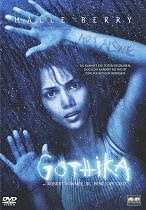
Film Title: Gothika
Director: Mathieu Kassovitz
Year: 2004
In Gothika the audience’s expectations are fulfilled because from the very opening scene we learn about a character being possessed by the devil and this is a typical convention of a horror film. Also this character is a stock character of a horror film; this is because she is a typical character that you would have in a horror movie. The text conforms to the characteristics of the horror genre because its location is set in a mental prison which gives an eerie and scary atmosphere. Also this first stock character is talking about how she cut her step-fathers throat open. These examples are conventions of typical horror movies.
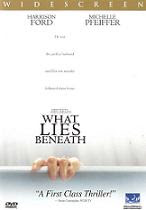
Film Title: What Lies Beneath?
Director: Robert Zemeckis
Year: 2000
What lies beneath is a horror thriller. The narrative begins with the film title reflected off of water to create a rippling effect. Subsequently, the camera moves slowly and reveals underwater plants oscillating by a stream of low-key lighting which creates the heavy use of contrast between light and dark, immediately constructing the genre of the film to be a horror thriller. The slow, eerie, sinister music creates a sense of tension and suspense which crafts the following scene to be much more terrifying, implementing another convention of a thriller. This is when the main character is introduced with a close up of a lucid ethereal face, a common convention of a horror thriller, appears over Michelle Pfeiffer’s character. She lifts her head out of the water revealing a distressed out of breath women and with lack of clothing suggests vulnerability. This is then followed by a straight cut with the use of a long shot that moves slowly towards Michelle Pfeiffer, suggesting another presence other than the audience is watching her. This then follows her getting electrocuted whilst she tries to fix her seemingly broken hairdryer. The questions that are raised are why are we introduced in an underwater setting? Why Michelle Pfeiffer has almost drowned in her own bath tub? And why is she alone? Overall, these keep the audience watching because it creates ambiguity and questions that the viewers want to be answered. What we can learn from this opening sequence to help us with ours is that if effective music and camera angles and shots are employed it will build the narrative to create suspense and raise questions for our audience.
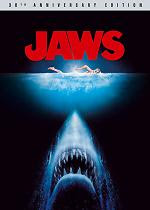
Film title: jaws
Director: Steven Spielberg
Year: 1975
Jaws is a thriller. The narrative begins with the camera tracking through the sea, showing the swaying of underwater plants, corals and the rippling and reflection of light through the water, contrasting light and dark to instantly assemble a thriller genre. The music that is followed with this is slow, sinister, orchestral music and gradually builds up to become fast paced, which makes the audience on edge. This has the conventions of a thriller because films usually start as narrative based with menacing music to keep the audience gripped. It then cuts to a panning, mid shot of teenagers gathered around a fire, smoking and drinking on the beach. There is harmonica and guitar playing and background chatter, which settle the mood of the music formerly used. The camera then pans to young boy and girl making flirtatious eye contact. A long shot is then used and shows the girl running away in a childlike manner- which demonstrates that they are in a playful mood. The boy then asks the girl “where are we going” and she replies “swimming!” This indicates to the audience that something will happen to one them due to the previous underwater scene, as the audience were given the impression that something dangerous and fatal is lurking in the water. The questions that are raised: what is in the water? What will happen to the girl if she enters the water? Will she be in danger or not? Overall, this keeps the audience watching because it creates ambiguity towards the creature in the water, which makes the audience want to find out what it is and how the creature is central to the film. What we can learn from this opening sequence is to not give anything straight away and perhaps to suggest or give clues that will make the audience want to keep on watching. It also helps us with our opening sequence as if we could create a distinctive theme tune like jaws which is widely recognised, it will set our film apart and create a synergy that will instantly identify our film with it.

No comments:
Post a Comment